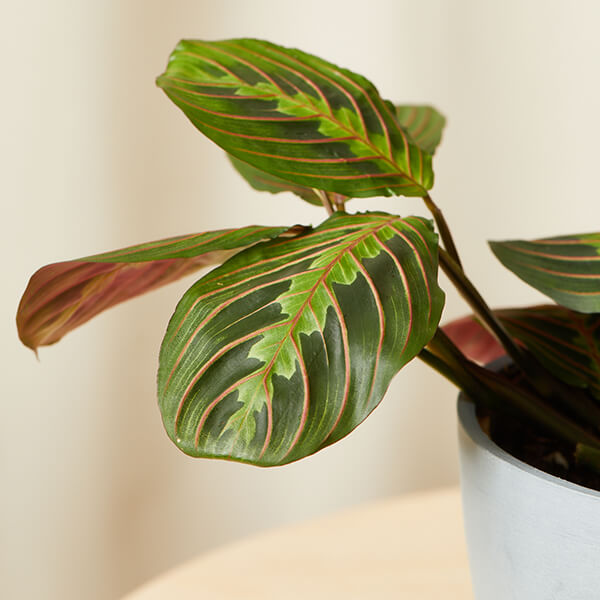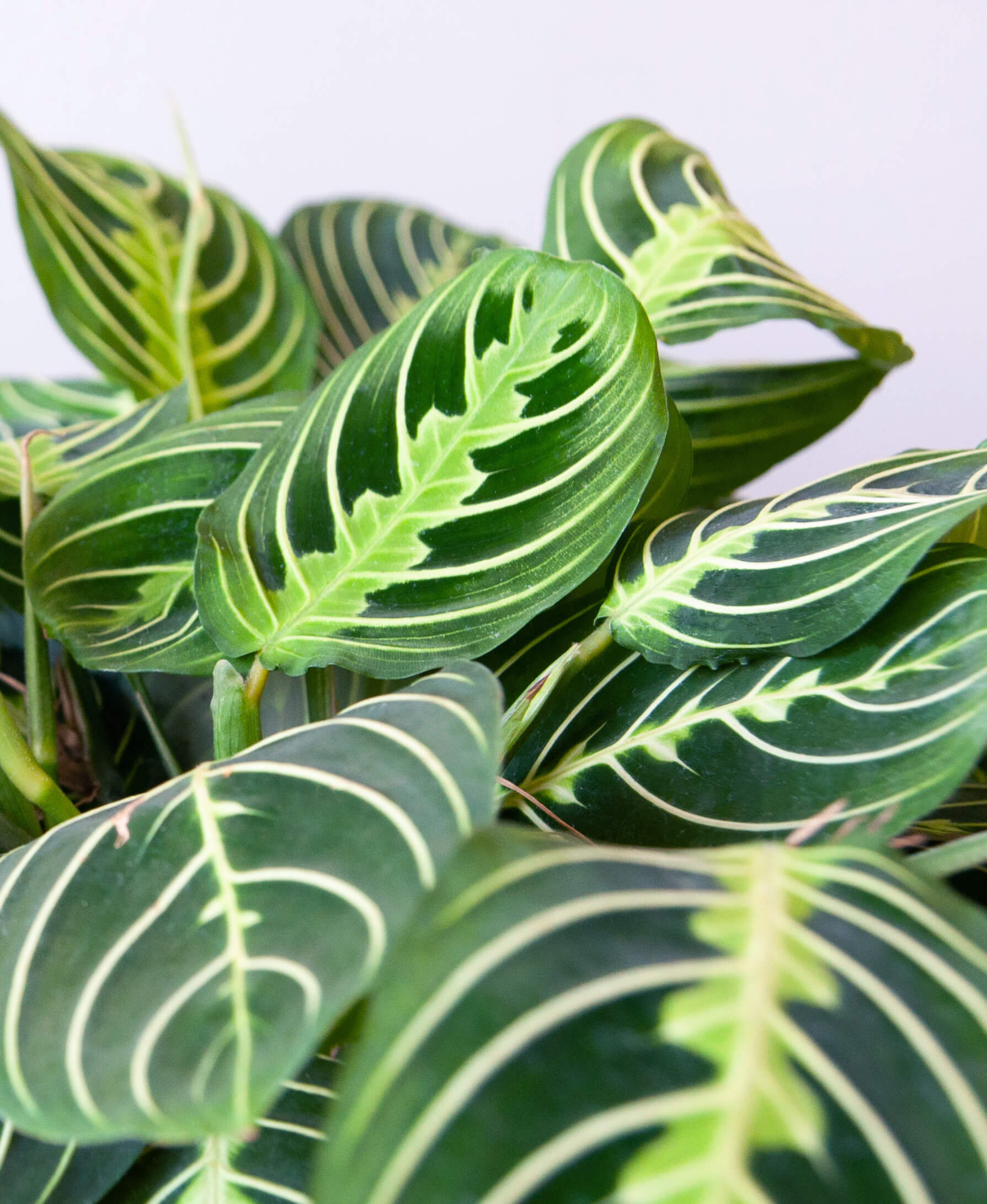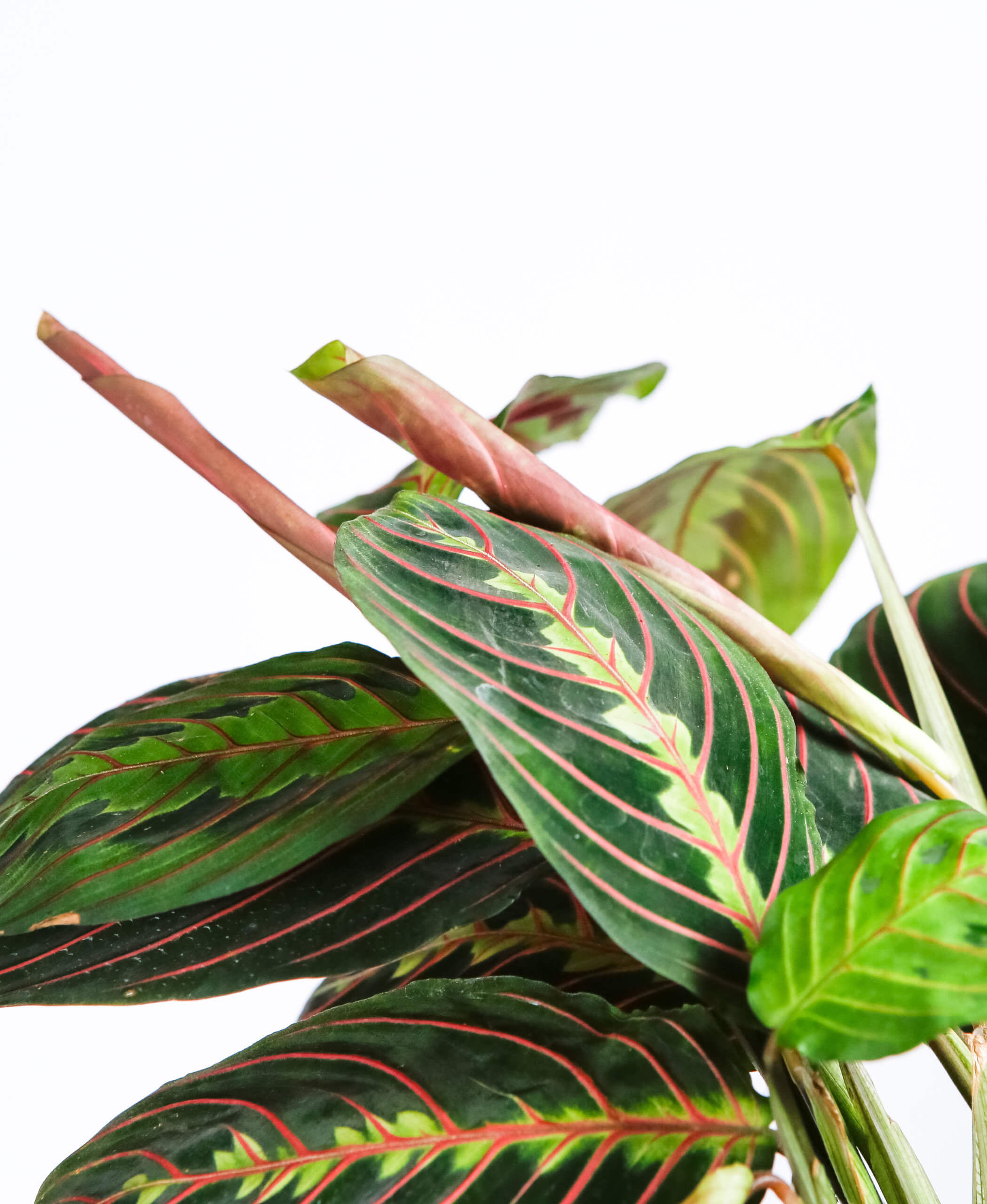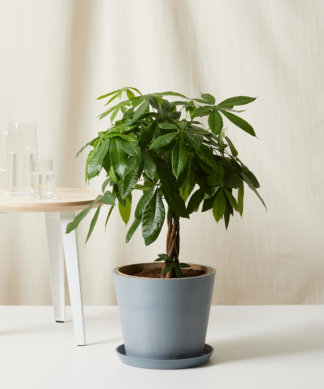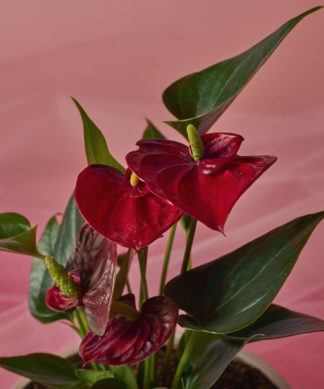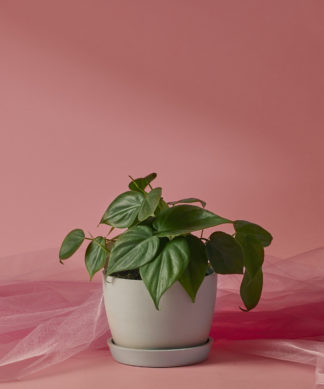How to care for your Prayer Plant
Use these instructions to care for a Prayer Plant. This guide will tell you how to water a Prayer Plant; its light, temperature, humidity preferences and any additional care it might need to help it grow.
Neon Prayer Plant
Your Prayer Plant prefers bright, indirect light. Direct sun can cause the leaves to fade and scorch.
Water when the soil volume is 25% dry. Water until liquid flows through the drainage hole and discard any that accumulates in the saucer.
This plant prefers above-average humidity. Use a pebble tray, place a humidifier nearby, or mist often.
Prayer Plants prefer temperatures between 68° – 85°F.
Feed once a month during the spring and summer with an all-purpose fertilizer for indoor plants. Never apply fertilizer to dry soil.
This plant is considered non-toxic and pet-friendly.
You can prune your Prayer Plant to encourage full, vigorous growth. Use a sterilized pair of sharp scissors and clip the stems right above a leaf node. You’ll soon notice new growth emerging directly below the cut area.
Rabbit's Foot Prayer Plant
Your Prayer Plant prefers bright, indirect light. Direct sun can cause the leaves to fade and scorch.
Water when the soil volume is 25% dry. Water until liquid flows through the drainage hole and discard any that accumulates in the saucer.
This plant prefers above-average humidity. Use a pebble tray, place a humidifier nearby, or mist often.
Prayer Plants prefer temperatures between 68° – 85°F.
Feed once a month during the spring and summer with an all-purpose fertilizer for indoor plants. Never apply fertilizer to dry soil.
This plant is considered non-toxic and pet-friendly.
You can prune your Prayer Plant to encourage full, vigorous growth. Use a sterilized pair of sharp scissors and clip the stems right above a leaf node. You’ll soon notice new growth emerging directly below the cut area.
Red Prayer Plant
Your Prayer Plant prefers bright, indirect light. Direct sun can cause the leaves to fade and scorch.
Water when the soil volume is 25% dry. Water until liquid flows through the drainage hole and discard any that accumulates in the saucer.
This plant prefers above-average humidity. Use a pebble tray, place a humidifier nearby, or mist often.
Prayer Plants prefer temperatures between 68° – 85°F.
Feed once a month during the spring and summer with an all-purpose fertilizer for indoor plants. Never apply fertilizer to dry soil.
This plant is considered non-toxic and pet-friendly.
You can prune your Prayer Plant to encourage full, vigorous growth. Use a sterilized pair of sharp scissors and clip the stems right above a leaf node. You’ll soon notice new growth emerging directly below the cut area.






